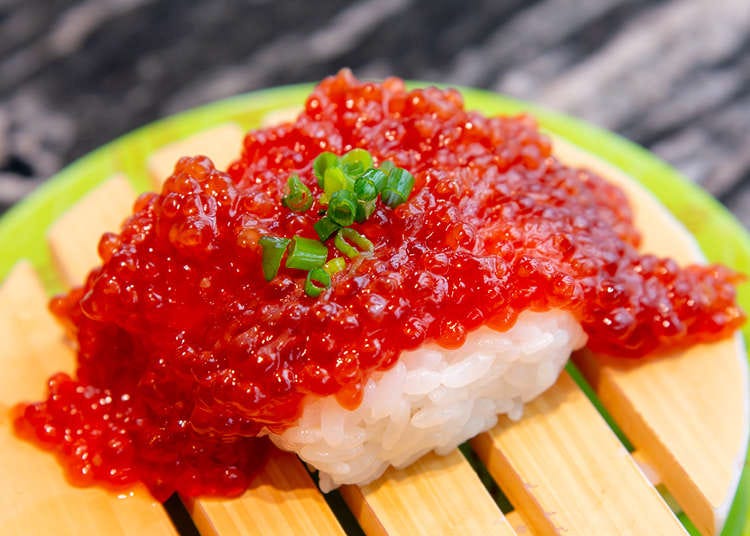
Hokkaido is known for its incredible fish and seafood quality. But what if you aren’t heading to Hokkaido? Not to worry, there is a shop in Tokyo’s Ginza where you can enjoy fresh and delicious sushi that tastes as good as if you were eating it in Hokkaido itself! The name of that shop is Kaiten Sushi Nemuro Hanamaru. This shop has gained a large clientèle of regular patrons because much of the ingredients used in preparing the sushi are carefully selected seasonal products from Nemuro, Hokkaido.
Ginza is an area well-known for its wealth of fine sushi restaurants, but this particular spot has become one of the most successful and popular around – a true testament to its quality!
Ingredients straight from the fishermen themselves
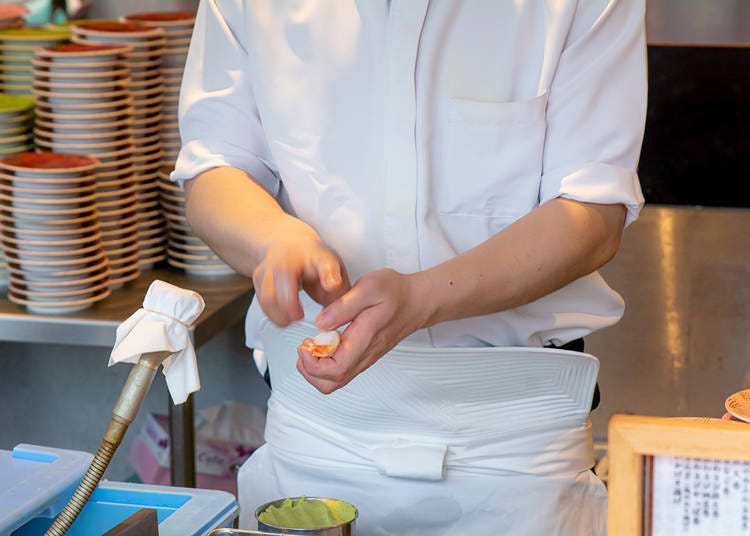
The restaurant is located on the restaurant floor of the Tokyu Plaza Ginza, a commercial facility in Ginza, Tokyo, where many popular restaurants are to be found. Kaiten Sushi Nemuro Hanamaru has such a thriving business that there is usually a line of eager customers waiting to get in when the shop opens at 11:00 a.m.
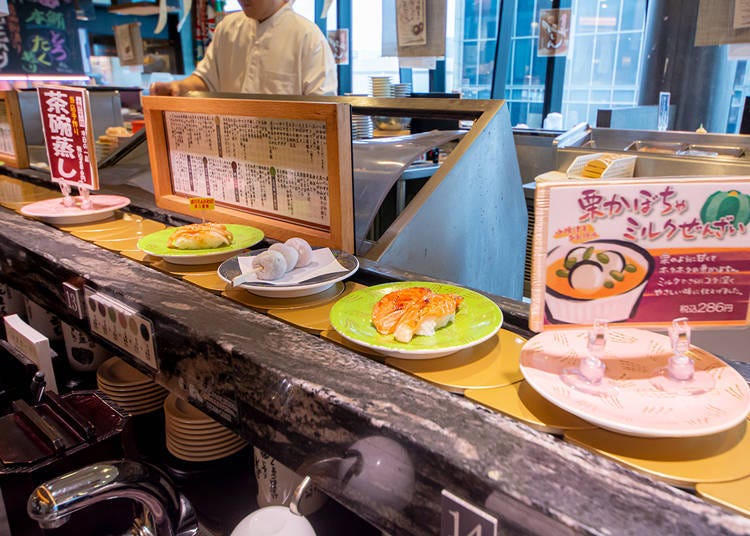
The secret to its popularity is the freshness of its sushi. It is so fresh that it is just like eating it in Nemuro, a port town at the eastern edge of Hokkaido nicknamed the "Seafood Treasure House" for its offering of many types of sushi neta [sushi topping] that are rarely seen in Tokyo. Customers are especially drawn to this conveyor belt sushi because of its reasonable prices.
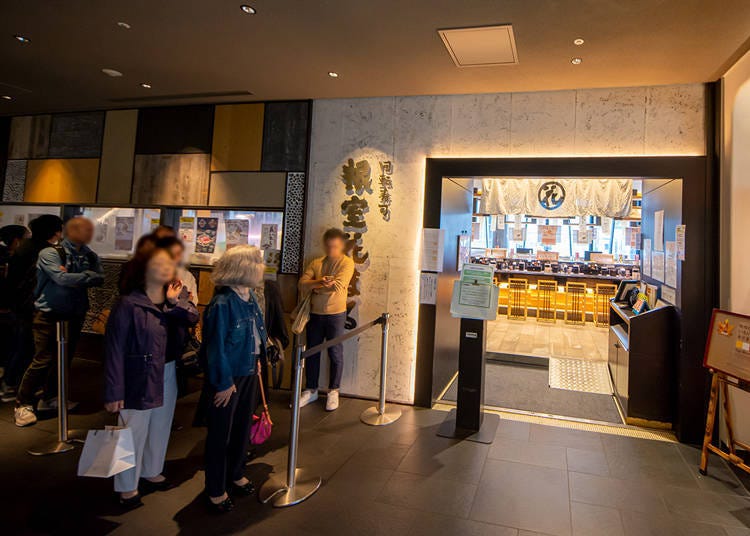
When you enter the shop you will see a long counter with seats on one side and on the other by the window, tables designed for groups. A steady stream of sushi moves along the conveyor belt, prices determined by the color of their plates which are 143 yen, 209 yen, 286 yen, 374 yen, 462 yen, and 638 yen (all including tax).
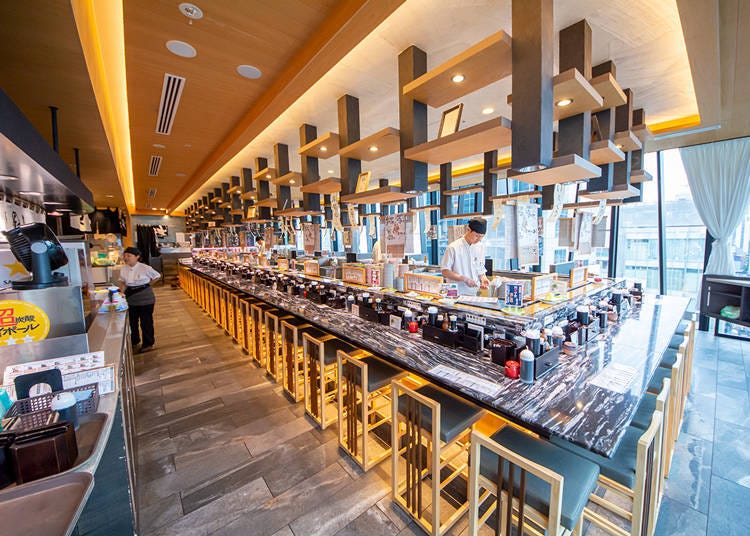
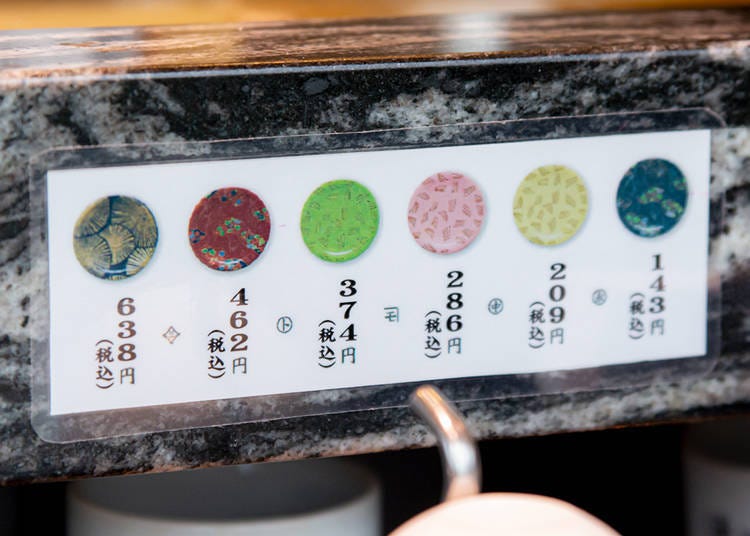
Get ready to learn some serious sushi vocab, because here we here we have a list of some of the varieties they have on offer (and this is just a snapshot!)
In addition to such standard neta as hon maguro [bluefin tuna] amaebi [sweet shrimp], and salmon, there many types rarely seen outside of Nemuro such as Hokkai tako atama [North Sea octopus head], ohyo konbu shime [halibut wrapped with kelp], nikaitate hotate [two-tiered scallops], hokuji buri [northern yellowtail], aburagarei [barfin flounder], Ezo maitake no nigiri [Hokkaido maitake mushroom], and aburi hokki aseshi shoyu nigiri [singed Sakhalin surf clam with scorched soy sauce].
Kenta Kurosawa, the store manager, said, “These neta are often eaten in Hokkaido. We have our own purchase route that enables us to buy it directly from local fishermen," he says with pride regarding the rich assortment of fresh seafood offered.
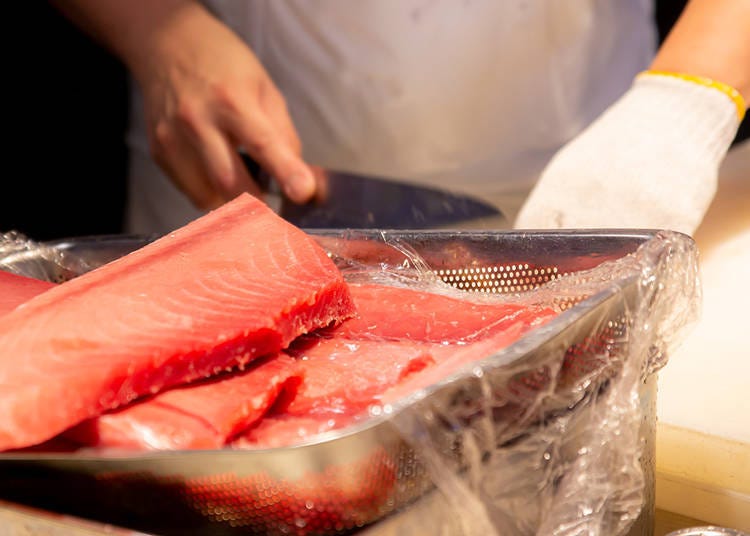
Many of Hanamaru's stores are located in Hokkaido, and all of them are widely popular with locals who are known for their discerning palates when it comes to seafood. In addition to having 10 stores in Hokkaido where it is primarily based, in Tokyo there is this shop on the tenth floor of the Tokyu Plaza Ginza Bldg., and Tachigui Sushi Nemuro Hanamaru, a shop in which you stand and eat, located in the second basement of the same building, as well as a third shop, the KITTE Marunouchi Shop, located in the KITTE complex in front of Tokyo Station.
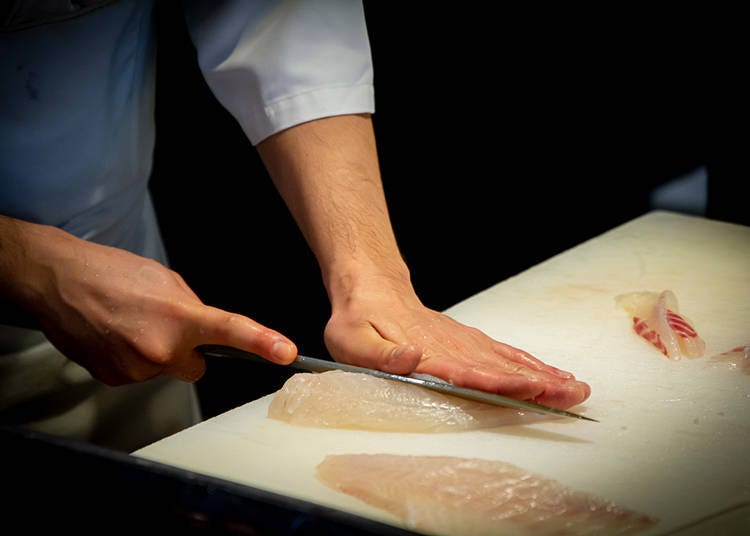
Currently the shop is able to offer about 100 different neta types at all times because efforts are made daily to find and obtain the most delicious seafood at fishing ports around Nemuro.
Hokkaido seafood is packed with flavor
"Customers often say that the tarabagani no fundoshi [Red King Crab Fundoshi] is quite different. Fundoshi is the meat around the stomach area. It’s very popular in Hokkaido, where I am from, but there are not many places where you can find it in Tokyo. I want customers to be able to savor local Hokkaido flavors,” said Mr. Kurosawa.
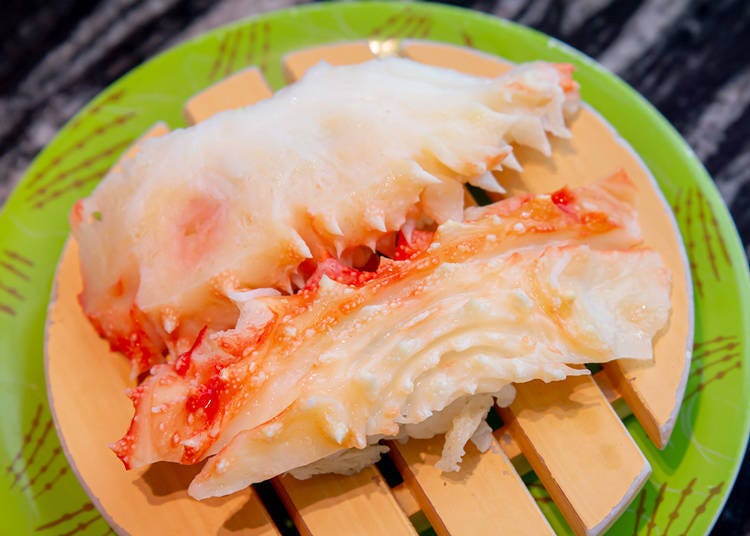
The freshly-formed king crab "Fundoshi" (374 yen, including tax) is plump and has an amazing texture. The moment you bite into it, the crab's rich flavor just spreads throughout your mouth, unlike any other crab sushi you may have had before.
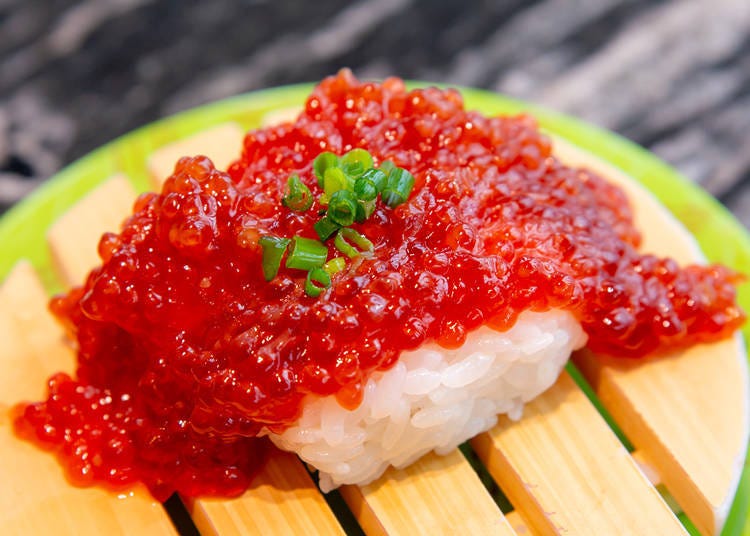
Another exotic dish is the Benizake no Sujiko Shoyuzuke [sockeye salmon roe pickled in soy sauce] (374 yen including tax) which is a flavorful salmon roe seasoned with just the right amount of low-salt soy sauce heaped upon a larger than normal amount of rice. With every bite the roe releases an explosion of umami.
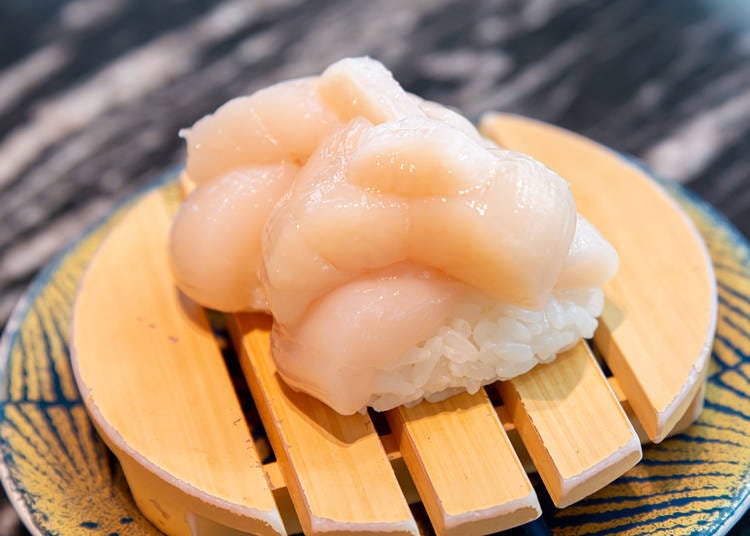
“The nikaitate hotate (462 yen including tax) is a lavish dish of two large, plump Okhotsk scallops stacked on each other. The meat is sweet and soft, and goes perfectly with the rice; truly a dish that embodies the sushi of Hokkaido.
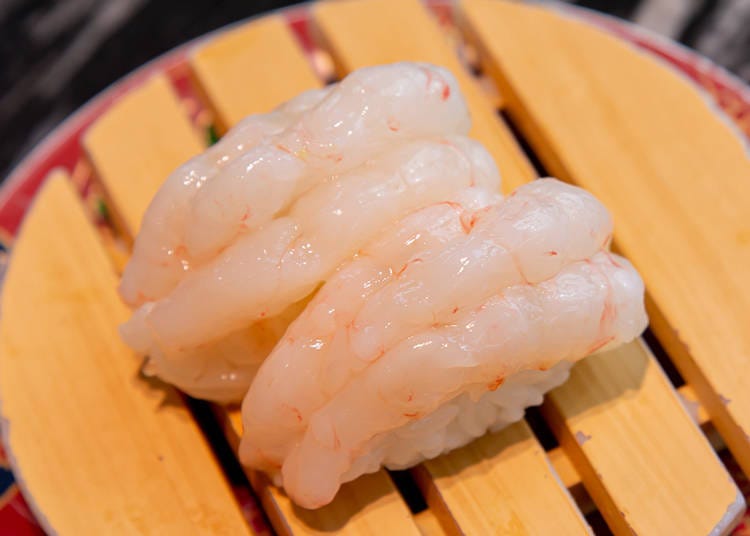
The Temuki Botan Ebi [hand-peeled peony prawn] (462 yen) is another luxuriously large neta, one serving consisting of three prawns. It has a rich umami and creaminess that infuses your mouth with sweetness with each bite.
Teppo-jiru – the amazing crab soup side dish
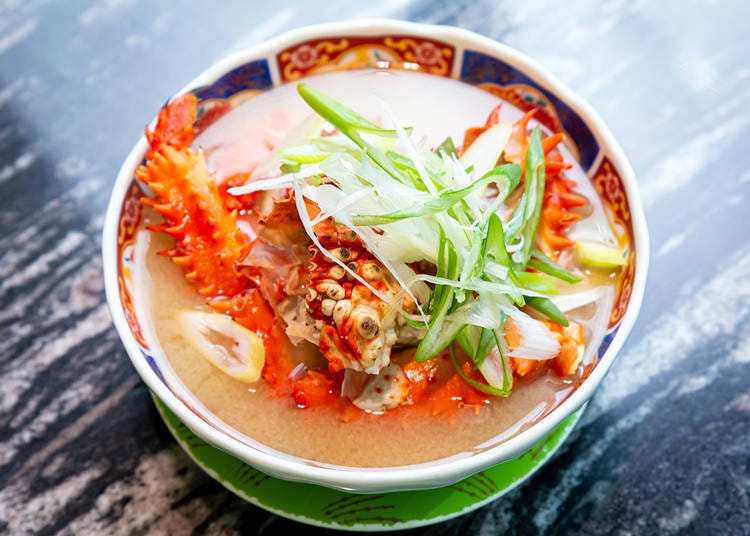
We recommend ordering the Hanasaki Kani no Teppo-jiru [Blue King Crab Soup] (374 yen including tax) to go with your sushi. Boiled to a bright red perfection, this succulent crab will take your breath away when it is presented; the miso soup amplifying the umami of the crab which has a wonderful texture. This dish alone draws many repeat customers.
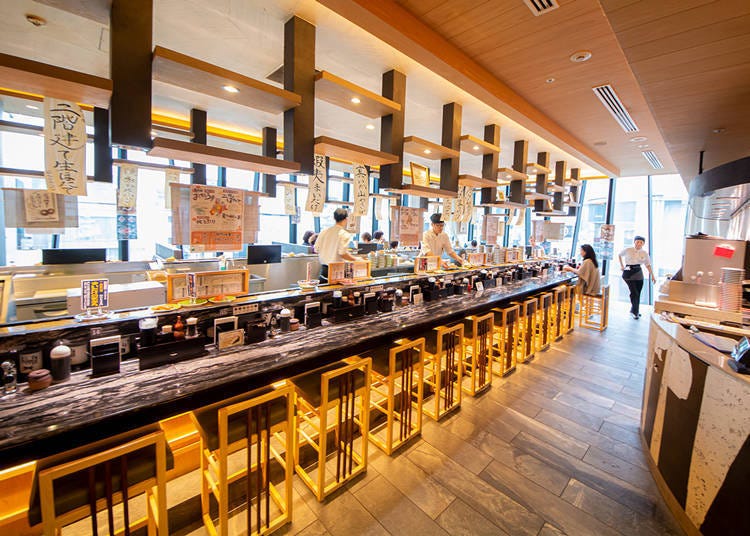
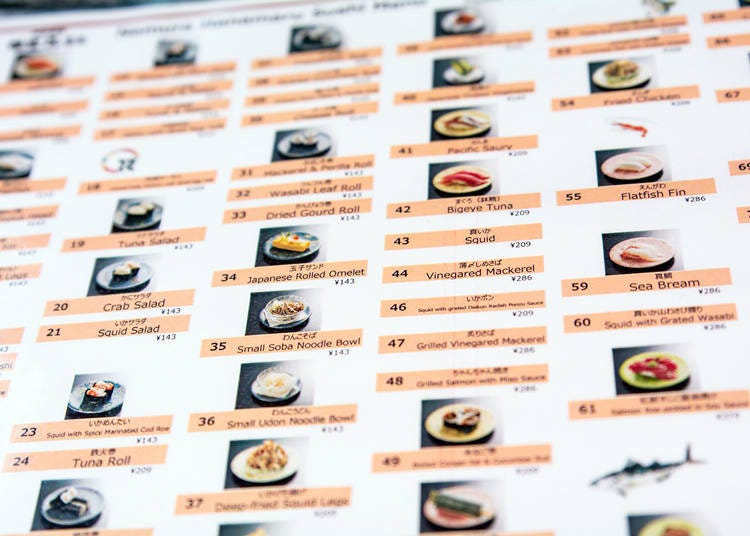
The cheerful voices of the chefs and staff ring throughout the shop bringing smiles to the faces of customers enjoying the large portions of sushi. Nigiri in Japanese means to squeeze and that is how sushi is made: by expertly squeezing slices of seafood (neta) onto beds of rice (shari) by hand. Watching these chefs do that with the practiced skill of experienced craftsmen is as much a pleasure as selecting neta you like from the many types offered. “We also have a menu in English. Please come and experience for yourself our many unique neta,” Mr. Kurosawa added.
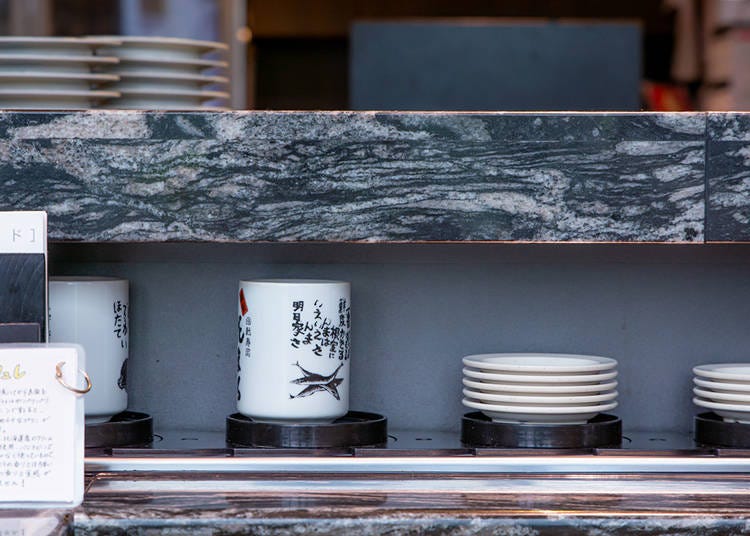
Sushi Tips!
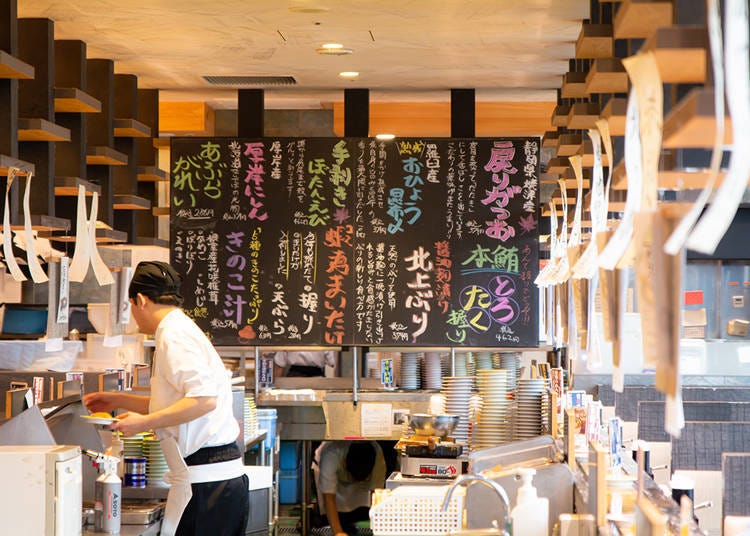
Lastly, here are some tips if it’s your first time at a conveyor belt sushi place.
At each table and counter seat there are small dishes for soy sauce and cups for tea going along the conveyor, so the first thing to do is to take one of each in preparation for eating your sushi.
Pour some soy sauce into a small dish and from the tea canister on the table, put one or two spoonfuls of tea powder into the tea cup and then add hot water from the tap on the table. Hot green tea goes really well with sushi.
Also on the table is gari (sliced ginger). Put some of that on another small dish. This is used after eating one type of sushi and before eating a different type to refresh your palate. It enables you to better enjoy the full taste of the next sushi you eat.
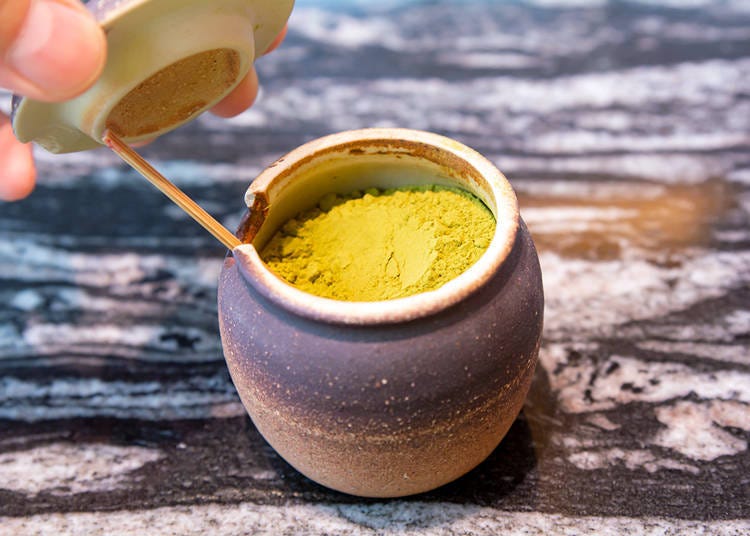
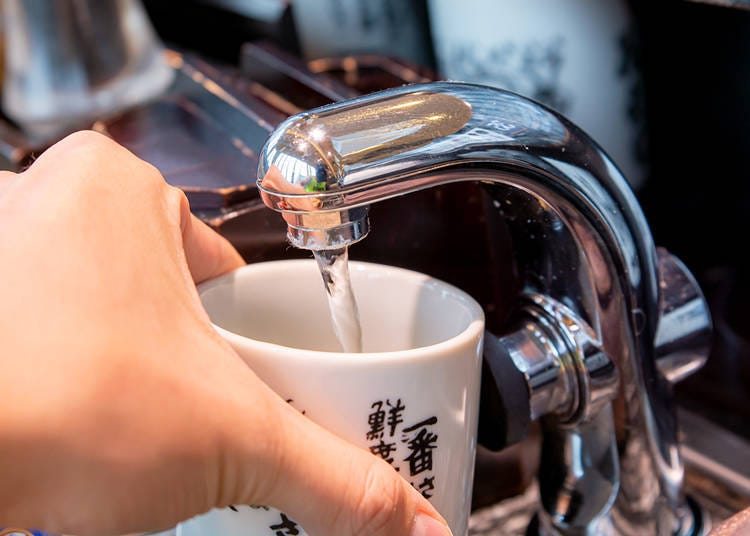
-
Nemuro Hanamaru Sushi (Ginza)回転寿司 根室花まる 銀座店
- Address Tokyu Plaza 10F, 2-1 Ginza 5-chome, Chuo City, Tokyo, 104-0061
-
Nearest Station
1-minute walk from exits C2 and C3 at Ginza Station on the Tokyo Metro Ginza Line, Marunouchi Line and Hibiya Line. 2-minute walk from the A1 Exit of Ochanomizu Station on the Tokyo Metro Chiyoda Line, 4-minute walk from the Ginza
- Phone Number 03-6264-5735
Opening Hours: 11:00 a.m. - 11:00 p.m. (Last order 10:00 p.m.)
Closed: Days off are same as those of the building.
*Prices and options mentioned are subject to change.
*Unless stated otherwise, all prices include tax.
Popular Tours & Activitiess
-

A Don Quijote Like No Other: Step Inside the All-New Tourist-Friendly Store at Shinjuku Tonanguchi Bekkan
by: Chehui Peh
-
Ad

Just 2 Hours from Tokyo! Enjoy Ibaraki’s Breathtaking Ocean Views, Flowers & Autumn Leaves on Private Tours
-

2025 Japan Autumn Color Report: Northeastern Japan Nearing Peak
by: Timothy Sullivan
-

(12% OFF KKday Coupon) Mt. Fuji Autumn Leaves, Powder Snow & More! 15 Best Tours to Experience Japan in Fall & Winter
-

The Ultimate Guide to Mitsui Outlet Parks in Japan (2025 Edition) - Popular Tax-Free Malls & Coupon Info for Travelers
-

See Asakusa and Tokyo Skytree® in a New Light at the "Také Akari" Festival (Winter 2025-2026)
by: Guest Contributor
Inspiration for Accommodations
-

Enjoy Mt. Fuji from the Comfort of Your Room! Recommended Ryokan with Mt. Fuji View
-

Stay Near the Cherry Blossoms! Hotels for Cherry Blossom Viewing in Tokyo
-

Family-Friendly Hotels with Free Shuttle to Disneyland: Convenient Access for a Magical Stay
-

Top Ranked Hakone Hotels with Mt. Fuji View: Enjoy Stunning Scenery from Your Private Space
-

Convenient Tokyo Hotels with Airport Shuttle: Ideal for Families and Heavy Luggage
-

Stunning Tokyo Tower View Hotels: Enjoy Spectacular Scenery from Your Private Space
-

Convenient Asakusa Hotels with Kitchens: Ideal for Extended Family Visits
-

Experience Luxury: Hakone's 10 Best Five-Star Accommodations
-

Enjoy Mt. Fuji Autumn Leaves! Top Hotels Near the Popular Autumn Leaves Corridor
-

Experience Hakone Fall Foliage from Your Room with Stunning Views
-

Meiji Shrine (Meiji Jingu): Exploring the Sacred Sanctuary of Peace in Bustling Tokyo
-

Exploring Tokyo: 4 Must-Visit Spots around Tokyo Station
-

Exploring Tokyo's Vibrant Heart: Popular Places Around Tokyo Station
-

Numazuko Kaisho in Ueno: Good Quality, All-You-Can-Eat Seafood for Just US$12!?
-

Exploring Tokyo's Neighborhoods: Enjoy Japan's Capital City in Your Own Style
by: Yoko
-

Midnight Dining in Shinjuku?! All the Meat and Rice You Can Eat – for just ¥980!
- #best ramen tokyo
- #what to buy in ameyoko
- #what to bring to japan
- #new years in tokyo
- #best izakaya shinjuku
- #things to do tokyo
- #japanese nail trends
- #what to do in odaiba
- #onsen tattoo friendly tokyo
- #daiso
- #best sushi ginza
- #japanese convenience store snacks
- #best yakiniku shibuya
- #japanese fashion culture
- #best japanese soft drinks


















